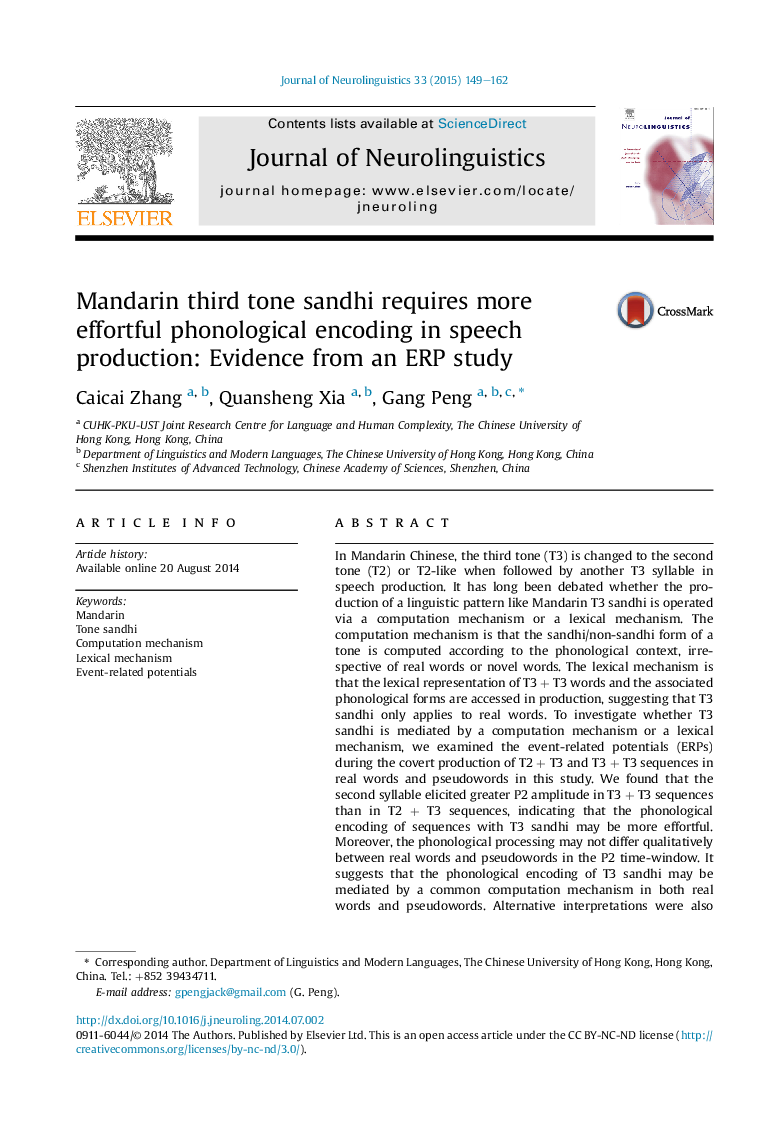| Article ID | Journal | Published Year | Pages | File Type |
|---|---|---|---|---|
| 7268860 | Journal of Neurolinguistics | 2015 | 14 Pages |
Abstract
In Mandarin Chinese, the third tone (T3) is changed to the second tone (T2) or T2-like when followed by another T3 syllable in speech production. It has long been debated whether the production of a linguistic pattern like Mandarin T3 sandhi is operated via a computation mechanism or a lexical mechanism. The computation mechanism is that the sandhi/non-sandhi form of a tone is computed according to the phonological context, irrespective of real words or novel words. The lexical mechanism is that the lexical representation of T3Â +Â T3 words and the associated phonological forms are accessed in production, suggesting that T3 sandhi only applies to real words. To investigate whether T3 sandhi is mediated by a computation mechanism or a lexical mechanism, we examined the event-related potentials (ERPs) during the covert production of T2Â +Â T3 and T3Â +Â T3 sequences in real words and pseudowords in this study. We found that the second syllable elicited greater P2 amplitude in T3Â +Â T3 sequences than in T2Â +Â T3 sequences, indicating that the phonological encoding of sequences with T3 sandhi may be more effortful. Moreover, the phonological processing may not differ qualitatively between real words and pseudowords in the P2 time-window. It suggests that the phonological encoding of T3 sandhi may be mediated by a common computation mechanism in both real words and pseudowords. Alternative interpretations were also discussed. These findings, which are in line with previous behavioral findings that T3 sandhi occurs in phonological/phonetic encoding before the initiation of articulation, shed some light on the online encoding of linguistic patterns in production.
Keywords
Related Topics
Life Sciences
Neuroscience
Cognitive Neuroscience
Authors
Caicai Zhang, Quansheng Xia, Gang Peng,
